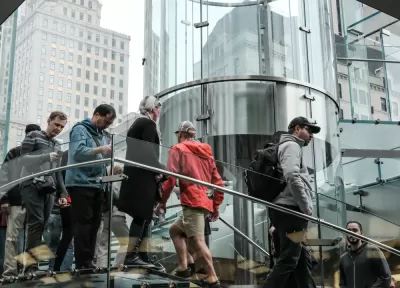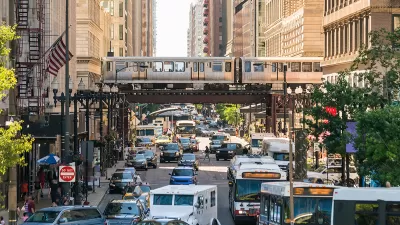Although there is a strong push for accessibility as a key metric in transportation and land use planning efforts, there is still a long way to go in putting theory and intentions into practice.

Accessibility is a popular buzzword among planning professionals. In fact, according to a 2017 analysis by the Brookings Institution, 22 of the 32 metropolitan transportation plans sampled for the report include accessibility in their vision, goals, or objectives.
According to Adie Tomer and Annibel Rice, "more people within the governance and planning communities have begun to subscribe to the concept of building around accessibility, or the ease of reaching destinations."
But, according to Tomer and Rice, "[th]e problem is that accessibility is still stuck in a theoretical place." After providing a list of the shortcomings of current accessibility metrics, Tomer and Rice provide a list of action items to move accessibility toward a more practical and deliverable presence in the planning process.
Here's the list of recommended action items, with a lot more detail provided in the source article:
- First, to promote tangible accessibility results, use clearly defined indicators to measure critical outcomes.
- Second, include accessibility criteria in the selection process for projects.
- Third, measure different destination types, transportation modes, and splits between target demographic groups.
- Fourth, use visualization tools and clear reporting of costs and benefits to inform the public.
FULL STORY: How Urban Planners Can Connect More People to Opportunity

Planetizen Federal Action Tracker
A weekly monitor of how Trump’s orders and actions are impacting planners and planning in America.

San Francisco's School District Spent $105M To Build Affordable Housing for Teachers — And That's Just the Beginning
SFUSD joins a growing list of school districts using their land holdings to address housing affordability challenges faced by their own employees.

The Tiny, Adorable $7,000 Car Turning Japan Onto EVs
The single seat Mibot charges from a regular plug as quickly as an iPad, and is about half the price of an average EV.

Seattle's Plan for Adopting Driverless Cars
Equity, safety, accessibility and affordability are front of mind as the city prepares for robotaxis and other autonomous vehicles.

As Trump Phases Out FEMA, Is It Time to Flee the Floodplains?
With less federal funding available for disaster relief efforts, the need to relocate at-risk communities is more urgent than ever.

With Protected Lanes, 460% More People Commute by Bike
For those needing more ammo, more data proving what we already knew is here.
Urban Design for Planners 1: Software Tools
This six-course series explores essential urban design concepts using open source software and equips planners with the tools they need to participate fully in the urban design process.
Planning for Universal Design
Learn the tools for implementing Universal Design in planning regulations.
Smith Gee Studio
City of Charlotte
City of Camden Redevelopment Agency
City of Astoria
Transportation Research & Education Center (TREC) at Portland State University
US High Speed Rail Association
City of Camden Redevelopment Agency
Municipality of Princeton (NJ)





























